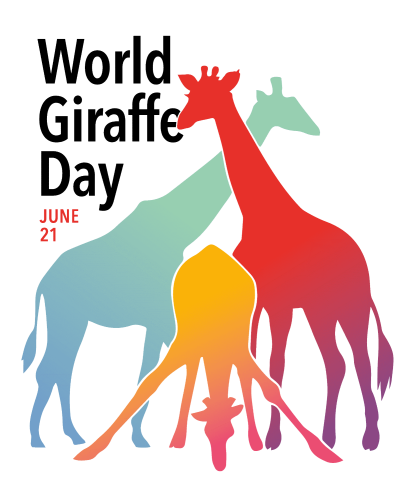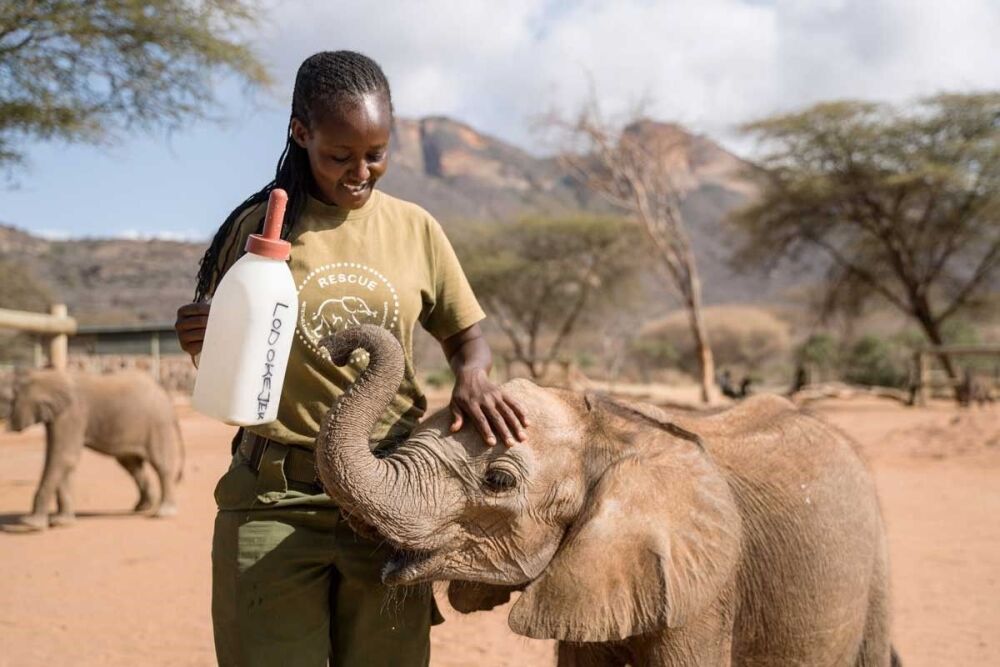World Giraffe Day 2024
Posted on
World Giraffe Day gives us all an important chance to raise awareness of the challenges giraffes face in the wild.
Giraffe face a Silent Extinction if we don’t act
There are only about 117,000 giraffe left in the wild now, so every giraffe is important and matters. West African giraffe are rarer than mountain gorillas. In fact, their decline has been referred to as the Silent Extinction, by Sir David Attenborough in the BBC documentary, “Giraffes: Africa’s Gentle Giants”.
A video on You Tube from the Giraffe Conservation Foundation made 3 years ago (2020) tells us that:
- Giraffe have gone extinct in at least 7 African countries
- In the last 300 years, we’ve lost 90% of all giraffe habitat
- Human population growth across Africa is having a huge impact on giraffe and other wildlife
The Foundation updates State of Giraffe every year, and this highlights the conservation efforts that are being made and also the status of wild giraffe in Africa.
Action is essential.
The Giraffe Conservation Foundation is the only organisation in the world which concentrates solely on the conservation and management of giraffe in the wild throughout Africa. Giraffe are still vulnerable to extinction, according to the IUCN Red List of Threatened Species.
It works in 15 African countries across 45 million acres of giraffe habitat. And it is making a difference to giraffe and I quote:
- Over 300 giraffe returned to their historical habitat
- 18 new giraffe populations established
- Over 85 giraffe born in original giraffe habitats
- Over 12 million acres of giraffe habitat reclaimed
- Over 5 million data points recorded
- Impact on over 100 million acres of giraffe habitat
Enter World Giraffe Day!
Why is on the 21st June? Well, it’s the longest day or night of the year, depending on where in the world you live, and because it’s the longest, it’s also – naturally – World Giraffe Day!
This an annual event was initiated by the Giraffe Conservation Foundation to celebrate this most beautiful of animals.
Zoos, schools, governments, companies and NGOs are hosting events to help raise awareness, and you can get involved and do your bit. Stick your neck out and raise awareness of giraffes and remind people of their beauty on social media!
Crucially, it’s a great opportunity for the Giraffe Conservation Foundation to raise much needed funds to continue their work moving wild giraffe to their historical habitat.
Giraffe Translocation
The charity has a translocation programme, moving giraffe. Giraffe are moving to areas where there are very few or no giraffe. They are also caught, and then given satellite tracking units so that they can be tracked which enables conservationists to find out more about their movements. Catching and tracking giraffe provides an excellent opportunity to find out as much as possible about these beautiful animals.
All the giraffes which have moved thanks to the programme are doing well and thriving. And the great news is that many new calves are being born! The programme is a key part of the Giraffe Conservation Foundation’s programme to ensure that giraffe have a future in Africa.
The Foundation works closely with local communities – many African children have never seen a giraffe so it has taken children into the field for a day to see giraffe.
You can read about their recent work and news here.
World Giraffe Day is an important fundraiser
It’s the Giraffe Conservation Foundation’s biggest fundraiser of the year and the non-profit receives most of its support as a result of it. So please, please if you can, chip in! This year, the goal is $65,000 and every donation impacts on over 100 million acres of giraffe habitat
Alternatively (or as well!), you could buy a limited edition charity print, or shop in the Giraffe Conservation Foundation's online shop.
Why not Adopt a Giraffe?
You could also adopt a giraffe (or a family of giraffe) for yourself or as a gift for a loved one - the Adopt-a-Giraffe Program allows you to follow the lives of a few selected desert-dwelling giraffe in the remote north west of Namibia, next to the Etosha National Park. The adoption programmes help fund the giraffe translocation programmes, so these matter.
Join in the Social Media Challenge!
Show how you #StandTallforGiraffe – literally! Take a photo of yourself standing tall – you could make it a group photo, but please bear social distancing rules in mind! A baby giraffe measures about 2m at birth – whilst the adults reach the giddy heights of over 5m.
Or come up with something that’s giraffe inspired – a cake with a giraffe on it, or paint a picture – just show how giraffes have inspired you and spread the message on social media of World Giraffe Day!
And tag the Giraffe Conservation Foundation on social media - here are the tags…
- Facebook: @giraffeconservationfoundation
- Instagram: @giraffe_conservation
- Twitter: @save_giraffe
And use these hashtags to spread the message!
- #GiraffeConservationFoundation
- #WorldGiraffeDay
- #WorldGiraffeDay2023
- #StickYourNeckOutForGiraffe
- #StandTallForGiraffe
Visit the Giraffe Conservation Foundation here and remember, Keep Calm and Save Giraffe!





